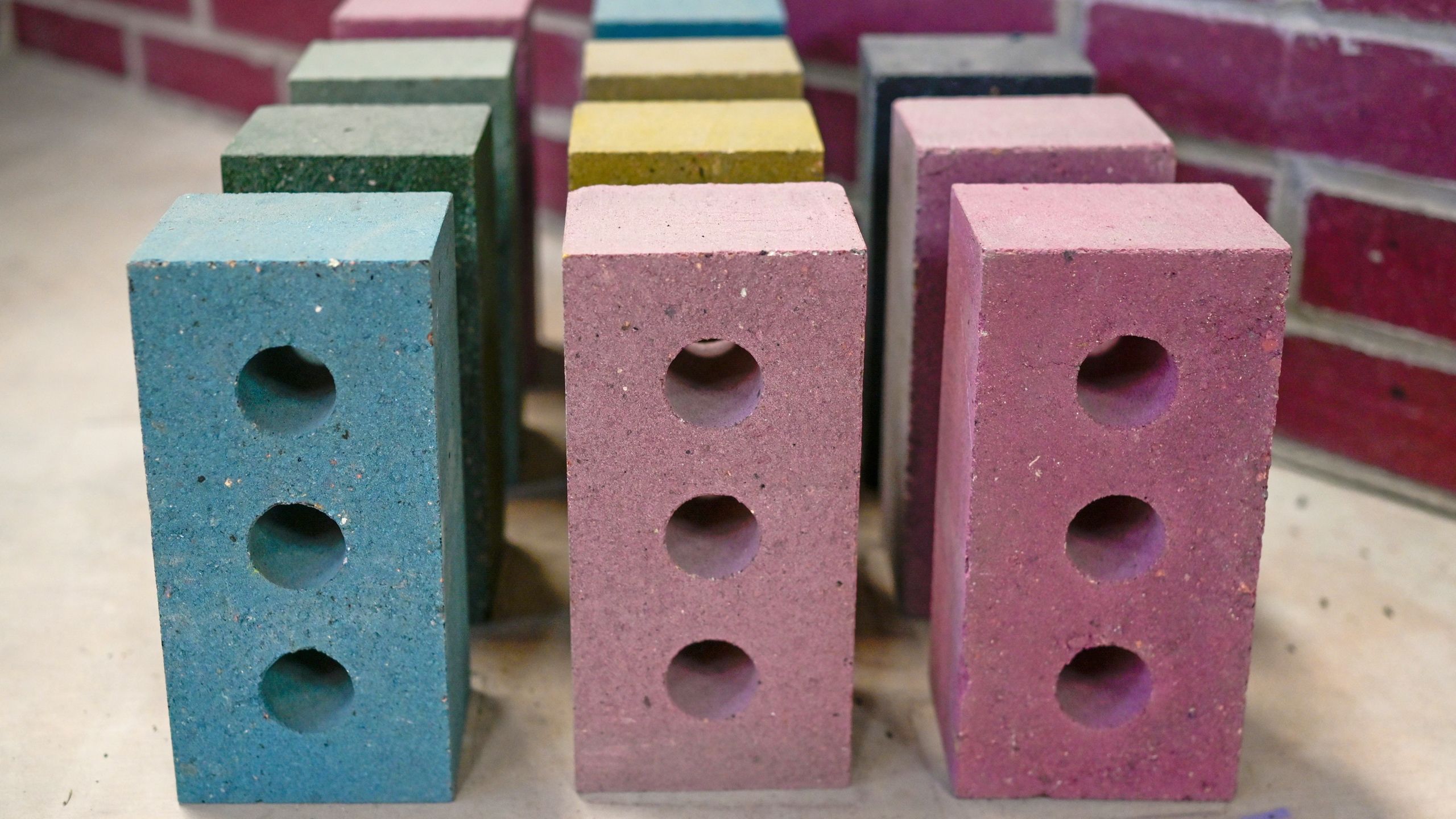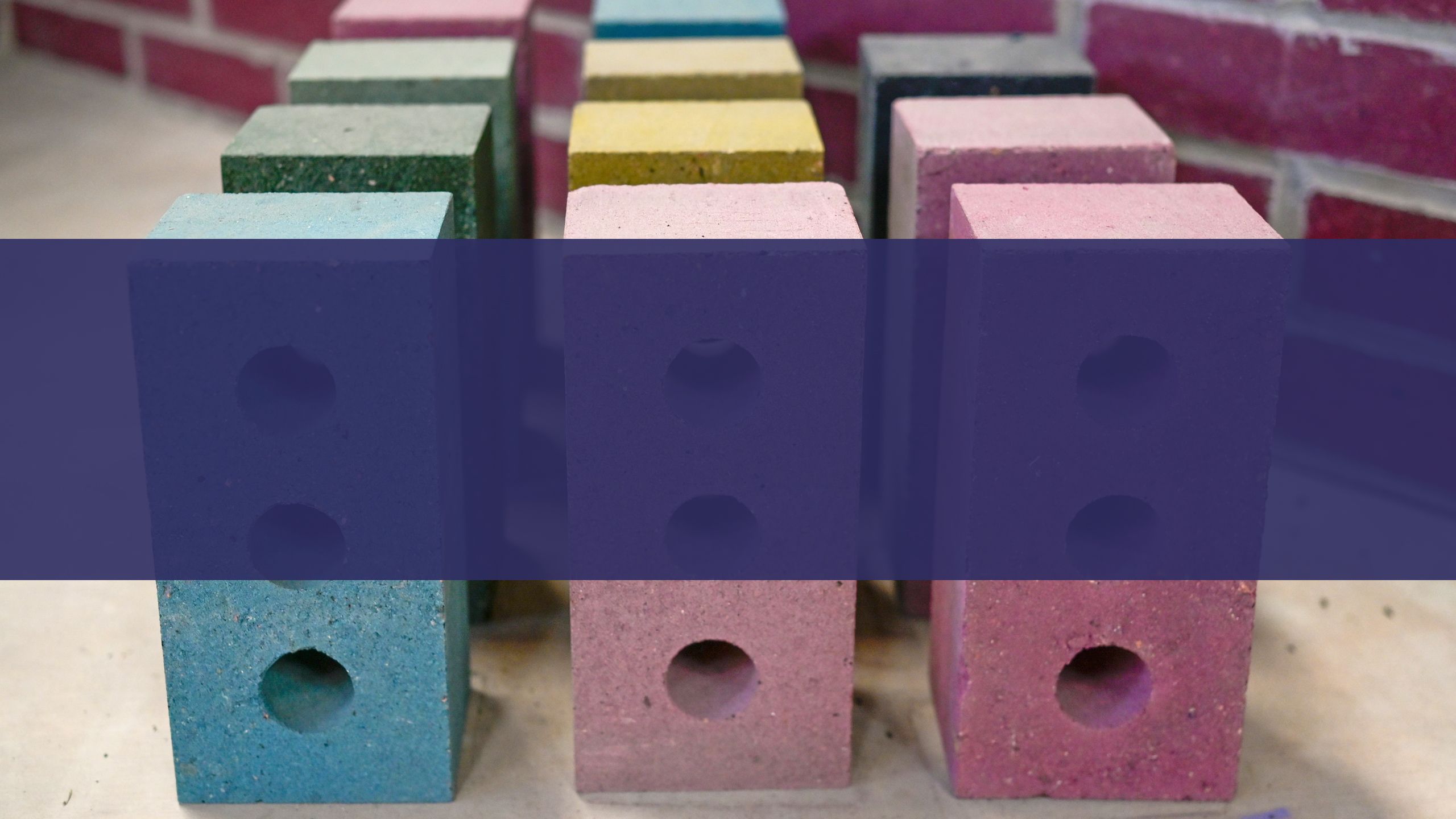Development of low carbon innovative composite material for the construction industry
Kenoteq Ltd are leading a project to investigate the suitability of a novel binder material in building construction, both for replacing cement and as a potential material for manufacturing bricks and blocks more efficiently and at lower temperatures.

Development of low carbon innovative composite material for the construction industry
Kenoteq Ltd are leading a project to investigate the suitability of a novel binder material in building construction, both for replacing cement and as a potential material for manufacturing bricks and blocks more efficiently and at lower temperatures.
There is a real need for novel low-carbon materials in the construction sector, particularly when it comes to cement-based products and clay-fired bricks, which are both very carbon and energy-intensive in their manufacture.
This circular solution utilises waste and side streams from the food processing industry, adapted by project partners Cellucomp from sugar beet pulp, to form a cellulose-based binding material for bricks with the potential for providing comparable performance to traditional building materials.
The project, which was backed by funding from the Transforming Foundation Industries (TFI) challenge, was headed up by low-carbon materials specialist Kenoteq and focused on work to design, construct, test and analyse samples of the binding materials at a lab scale to identify the extent of this opportunity.
“The urgent need for alternative low-carbon building materials is clear,” says Dr Sam Chapman, Co-Founder and Executive Director at Kenoteq. “This opportunity perfectly combined Cellucomp’s expertise in energy-efficient materials production with our existing work in designing novel building products. Having the support of Heriot-Watt University to test and assess the properties and performance of the materials meant the project came together quickly with a common aim.”
The project contained a number of key phases, from the design of sample products through testing and analysis to investigating the optimum combinations of ingredients to meet strict technical industry requirements. A lifecycle carbon assessment and wider market analysis took place within the project scope, demonstrating the underlying focus on net zero construction aims. “A successful alternative product has tremendous environmental potential,” adds Sam. “Moving away from traditional methods can bring significant benefits, including reduced energy input, lower CO2 emissions, greater resource efficiency, and the opportunity to find an effective use for waste and recycled materials.”

“The development of low-carbon technology is crucial for the future of construction, but it needs support through innovation to achieve the step change in decarbonisation that the industry may struggle to achieve by itself.”

Initial results showed that the product would be most suited to internal use in construction, meeting strength testing, density and pressure tolerance levels undertaken by Heriot-Watt. However, initial wear and tear and freeze/thaw resistance results meant that more work would be needed in the future to make it effective for external use. “Following the adaptation from the initial external use plans, we were able to gain real momentum under the project,” Sam says. “We successfully achieved all the landmarks set out within the scope of the funding, also demonstrating that the product can be made at scale for a cost that has the potential to be comparable with industry-standard products. These are all vital elements of building the case to push innovation forward in the industry.”
The project is now seeking further funding to continue the development of the material’s optimal composition for internal brick use before being able to move to larger-scale commercial testing to demonstrate its viability to meet potential demand effectively. The partners also consider the potential demand from overseas, building on the interest in their existing low-carbon products and expertise.

Initial results showed that the product would be most suited to internal use in construction, meeting strength testing, density and pressure tolerance levels undertaken by Heriot-Watt. However, initial wear and tear and freeze/thaw resistance results meant that more work would be needed in the future to make it effective for external use. “Following the adaptation from the initial external use plans, we were able to gain real momentum under the project,” Sam says. “We successfully achieved all the landmarks set out within the scope of the funding, also demonstrating that the product can be made at scale for a cost that has the potential to be comparable with industry-standard products. These are all vital elements of building the case to push innovation forward in the industry.”
The project is now seeking further funding to continue the development of the material’s optimal composition for internal brick use before being able to move to larger-scale commercial testing to demonstrate its viability to meet potential demand effectively. The partners also consider the potential demand from overseas, building on the interest in their existing low-carbon products and expertise.

